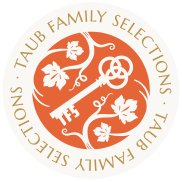

Wakefield A Clare Valley Icon

In 1960s Australia, cabernet sauvignon was rare. Sure, shiraz, semillon, riesling, and sweet port-like wines were plentiful, but what was a Bordeaux-loving wine merchant supposed to do? Seek out the best terroir and plant their own cabernet vines, of course — which is exactly what Bill Taylor Sr. did in 1969. In fact, the same day Neil Armstrong walked on the moon, Bill took his own historic steps and purchased a Clare Valley vineyard destined to become the heart of his winemaking legacy.
You see, Bill was convinced that Australia could rival the quality of the cabernet blends from the “Old World.” (Meanwhile, Mondavi was starting to make significant strides with cabernet on the other side of the Pacific in California’s Napa Valley.) So, he sourced his first clutch of vines from Wynns in Coonawarra, one of the very few places in Australia where cabernet sauvignon was being grown. Lucky for fine cab lovers everywhere, Bill never looked back.
Taylors — known today as Wakefield in the United States, named for the river that runs through the property — is now one of the most important producers in Australia. It is a member of Australia’s First Families of Wine (AFFW), a group of family-run wineries, all multi-generational, with a focus on excellence. While Bill is still involved in the business, it is now run by the third generation of the family, brothers Mitchell, Justin, and Clinton.
Winemaker Adam Eggins has worked at the Wakefield winery since 2000 and, in 2006, was named Australian Winemaker of the Year by Winestate magazine. Working closely with Mitchell (the estate’s managing director), Adam aims to create wines that embody the family’s core values: integrity, passion, authenticity, and quality.
Aiming secure their tradition of excellence for future generations, Wakefield was one of the first wineries in the world to produce a carbon neutral range of wines and, in line with the Paris Agreement, was the first independent Australian winery to commit to Science Based Targets, considered by the global business community as the gold standard for environmental sustainability initiatives.
Terroir
Wakefield’s wines may be defined as “New World” but they are grown on extremely ancient soils. At over 640 million years old, the terra rossa (red loam over limestone) produces low yields and highly concentrated grapes.
Situated 220 kilometers / 137 miles north of Adelaide, the Clare Valley is in the Mount Lofty Ranges, cooler than many regions of South Australia due to the influence of the coast and its elevation, peaking at 530 meters / 1,739 feet. The altitude of the region allows for significant diurnal range and offsets the sunshine hours (1,760 per year) which are the highest of any premium wine region in the world.
Shiraz tends to perform better in the north of the valley where it is warmer, whereas cabernet thrives closest to the winery in the south where it is cooler. In the middle, riesling benefits from the highest zones and the coldest nights. It may only account for 3% of the country’s wine production, but Clare Valley has a reputation for producing some of the best wines from Australia.

Viticulture
Wakefield currently has 500 hectares / 1,235 acres under vine and holds the largest vineyard in the Clare Valley. Despite the presence of 12 different varieties, cabernet is still the most important — proving Bill Taylor’s original hunch right!
Underpinning their viticulture is an impressive commitment to sustainable practices that goes far beyond those of most wineries. The Taylor family has been instrumental to the regeneration of the Wakefield River where it crosses their Clare Valley estate. They have replanted local vegetation and encouraged biodiversity, vital for soil health. They use organic matter as mulch (including grape marc) and a flock of sheep keeps grasses under control while providing natural fertilizer. There is also an onsite wastewater facility that recycles all water from the Wakefield winery for reuse in the vineyards.
For these efforts, Wakefield has won numerous awards in the field of sustainability and is considered a leader in the Australian wine industry.

Respecting the Fruit
Wakefield aims to achieve balance, elegance, and finesse, seeking to craft wines that are at once powerful and elegant. Their philosophy rests on the singular principle that the finest wines are those made with the greatest dedication and care. From their earliest days to the modern era, the Wakefield axiom of “above all, respect the fruit” has never wavered. And the payoff is evident in every bottle.









